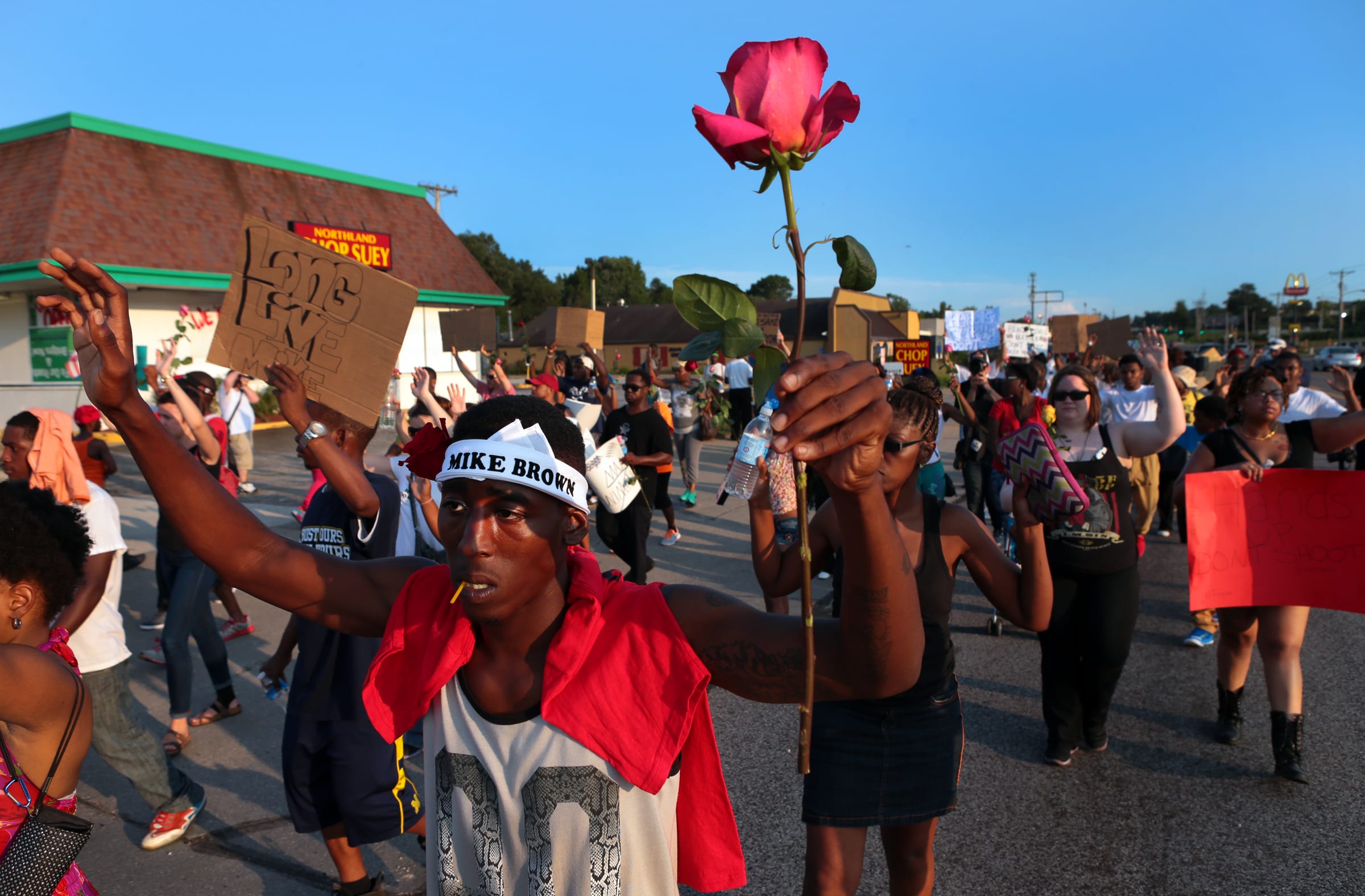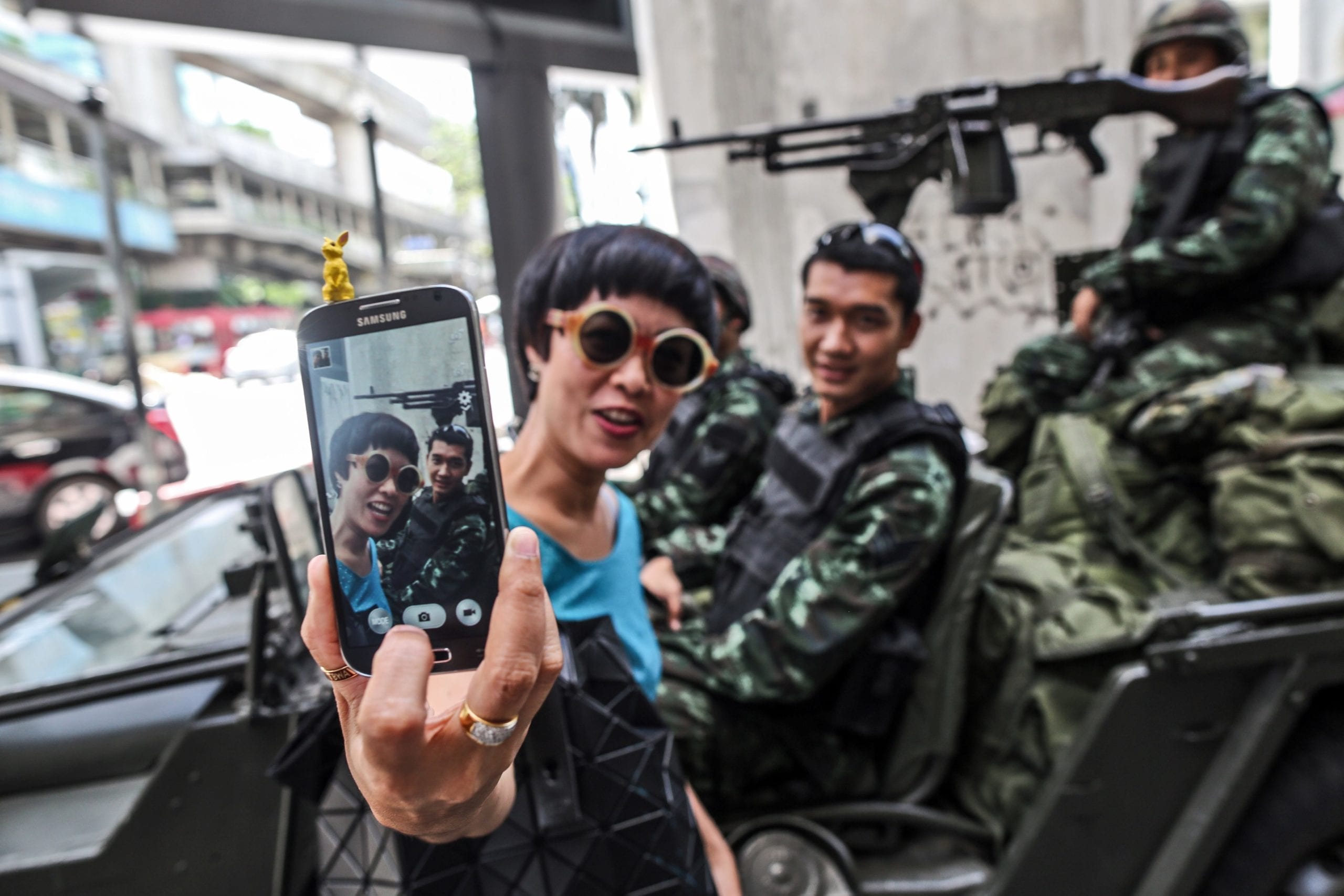“If you’re angry, throw your arms up,” said Reverend Al Sharpton. “If you want justice, throw your arms up. Because that’s the sign Michael was using. He had a surrender sign. That’s the sign you have to deal with. Use the sign he last showed. We want answers why that last sign was not respected.”
Sharpton was speaking in August, 2014, year in Ferguson, the poverty-stricken suburb of St Louis, Missouri. Sharpton had travelled to speak in the wake of the death of the black teenager Michael Brown who – it has been claimed – was shot by a policeman while his hands were extended above his head, palms open. The #HandsUpDontShoot campaign went viral.
A month later, in Hong Kong, the ‘umbrella movement’ began. Thousands of people, mostly millennials, occupied the intersection outside the Hong Kong government. At the urging of Hong Kong’s local Occupy movement, the protests spread, blocking the city’s main thoroughfares. The protest was specific, opposing a proposed election reform that would extend Beijing’s control over the former colonial province. But the protest was revolutionary in its methods, as well as its message. For this was a movement designed for networked photography.

Photo © Robert Cohen
One of the most memorable images of the protests was of demonstrators blanketing one of the main arteries of the city, their mobile cameras lit up, waving over their heads. Two days into the protest, the police began lobbing tear gas canisters at the pro-democracy demonstrators, officially warning of “a higher level of force” against the crowds of thousands if “public order” was not restored. The protestors responded by raising their hands above their head, palms open. The pictures spread across the world. And, be it from the demonstrators or their followers, a hashtag was affixed – #HandsUpDontShoot.
In this age, protests are no longer local, but global. Support can swell, from all corners of the earth and almost instantaneously. They’re mutual, interlinking, borrowing from and supporting each other. Never before, to this degree or with this creativity, has peaceful protest understood, appropriated and harnessed the power of photography.
A symbiotic relationship is at play here. Each demonstrator was armed with a connected camera. But the protest was defined by its performative elements, a unique and intuitive understanding of how to communicate online.
As the police rolled in, Beijing swung into action. The state-owned Chinese media depicted the Hong Kong protesters as extremists bent on destroying mother China. Instagram, one of the only global platforms permitted in China, was immediately closed. China’s army of online censors started deleting en masse protest-related photos and comments on Weibo, the Chinese equivalent of Facebook, with 46 million daily active users. Weibo banned the words ‘Hong Kong’, ‘barricades’ and ‘Occupy Central’. Soon afterwards, the word ‘umbrella’ – the chosen, omnipresent motif of the revolution that became known as the ‘umbrella movement’ – was banned.

It made practically no difference. Chinese mainlanders started to show their support by sharing images of umbrellas. It spread with such speed, and with such subtly, that the censors were outwitted and overwhelmed.
In Thailand earlier this year, protesters demonstrating against the military, which seized power in last month’s coup d’état, started invoking a three-fingered salute. It was, to a certain generation of Westerners, an instantly recognisable reference; the same hand-gesture used by the oppressed population of the sci-fi film franchise The Hunger Games. In a development that could be straight out of Suzanne Collins’s novels, the Royal Thai Army launched a “Happiness” campaign, staging free festivals across Bangkok to “bring back happiness” to the Thai public following the military coup. A hashtag started to trend – #showmeahotsoldier – as hundreds of protestors posed for selfies with armed soldiers, or photographed themselves smiling as armoured trucks mounted with heavy artillery rolled through the city centre.
This camera-ready, image-fluent form of protest is no fad. Filming the police in public has always been a federal right in America, and NYPD recently sent out a memo reminding officers of that fact. Courses have cropped up in the city, teaching citizens how best to assert this right without fear of redress. The department is now outfitting officers with their own lapel cameras.
We’re experiencing the beginnings of a new movement. The semiotics of activism has changed. Long live this era of civiv photojournalism.
